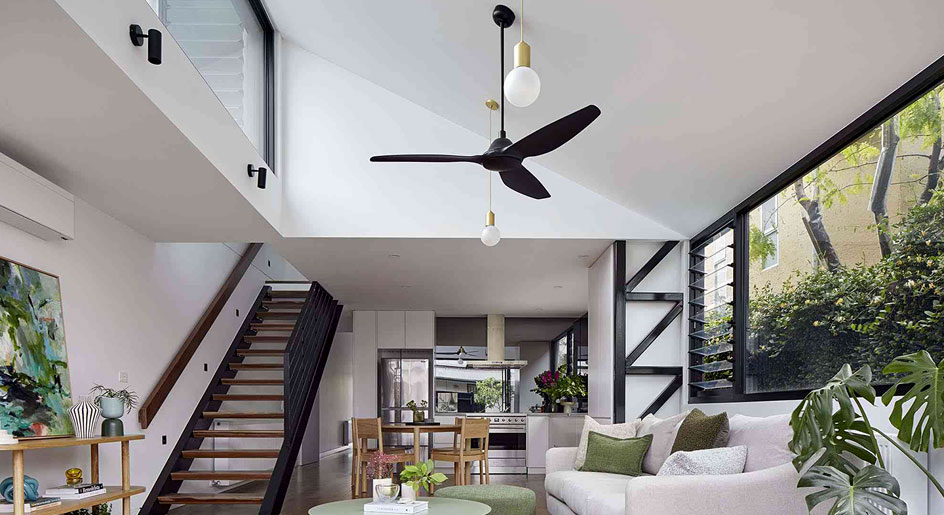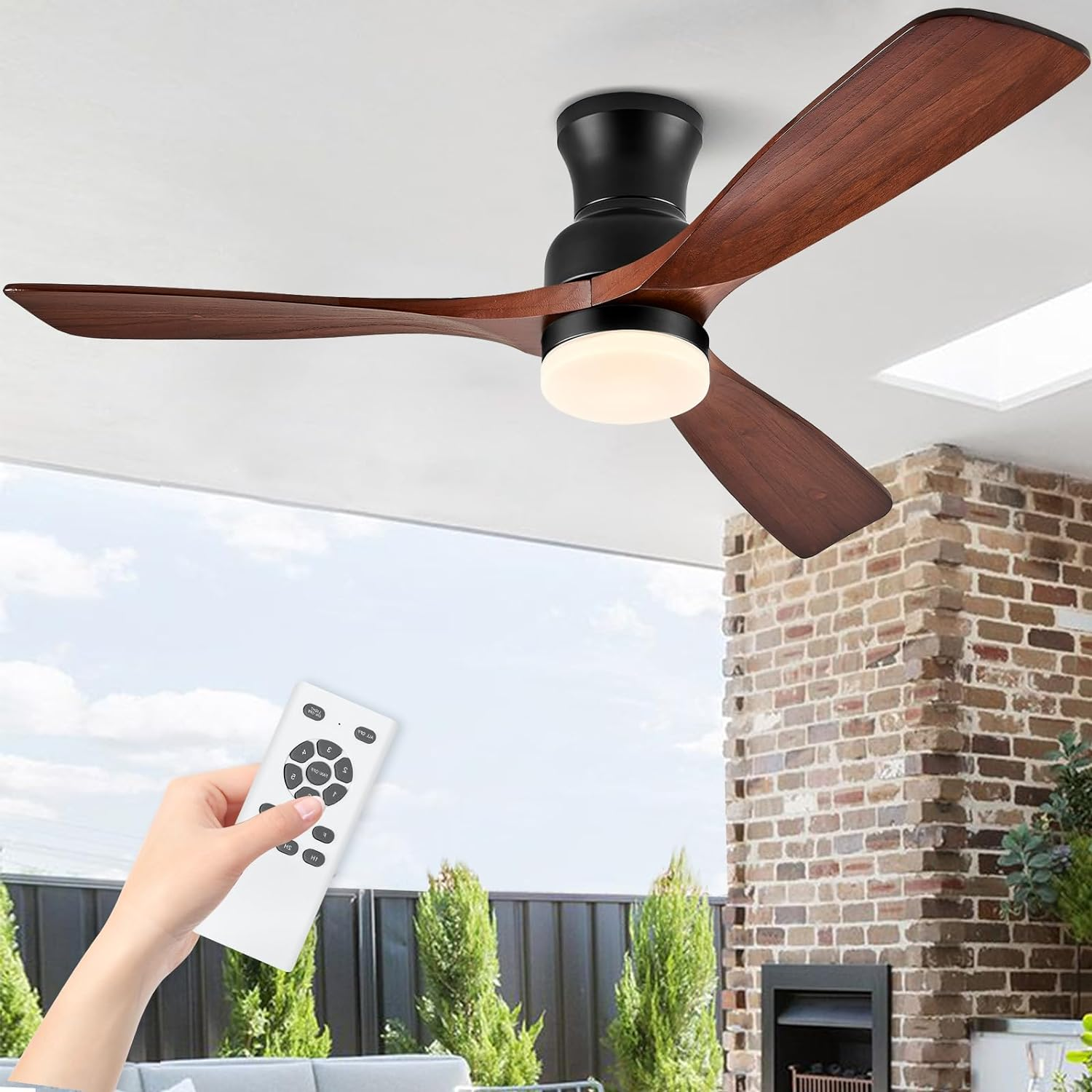Which Way Should Your Ceiling Fan Spin in the Summer and Winter? If you're wondering how to use a ceiling fan to stay warm in winter and cool in summer, here's the definitive guide.

1. Summer ceiling fan direction.
While many people think of fans as a low-cost, ineffective alternative to air conditioning, the Department of Energy still advocates utilizing circulating fans, specifically ceiling fans, in conjunction with air conditioning.
Here's how to make sure yours is ready as the weather heats up.
In the summer, which way should a ceiling fan be turned?
In the summer, you should know that ceiling fans should rotate counterclockwise to allow the blades to send cooler air down. Because a Ceiling fan do not cool the air in the room (they only cool the person), the counterclockwise motion circulates the air and creates a "wind chill" effect. The same is true for outdoor fans, which should be rotated counterclockwise.
2. Winter ceiling fan direction.
When winter come, ceiling fans should rotate clockwise at low speed (much quicker and you'll feel a cold breeze).
This causes an updraft, which helps transport warm air held near the roof back out and throughout the room, adjusting the average temperature. This is particularly useful in places with vaulted ceilings.
Recirculating warm air will make you and your thermostat feel better, and it will help your heating unit operate less frequently.
Standing under your fan and watching the blades spin will tell you if it is in winter mode. The blades should rotate clockwise from left to right. You can also stand directly under the fan when it is on high speed; the direction with the least amount of cool air is the correct one.
3. Ceiling fan direction: Further Information

During the summer, you want the air blowing straight on you to keep you cool from the wind chill effect. So get under the fan and crank it up to maximum speed. If you "Do Not" feel the air, turn off the fan and flip the opposite toggle switch. Reset the speed to high. If you sense more air, you're in the right place.
So, whichever location produces the maximum air circulation when standing directly beneath the fan is the best for summer. If you don't feel much air moving in any direction, your fan has a very weak motor with a rather flat blade pitch.
During the summer, fans like these will not help you in any way.
If this is the case, you might want to try visiting a specialty fan vendor online to acquire a fan that is more powerful than the ones sold at home centers.
During the winter, the opposite is true. You don't want the air flow from the fan blowing directly on you because the wind chill effect will make you feel cooler. So, once again, stand beneath the fan and crank it up to maximum speed. The option with the least amount of air is the one to use in the cold. However, during the winter, you should run the fan at a low speed; otherwise, even in the correct setting, you will receive some wind chill effect, which you do not want.
To clarify the operation of fans during the winter and summer:
During the winter (when operating in the correct mode, as explained above), the fan will slowly lift cooler air from the floor directly beneath the fan upwards to the ceiling, where it will mix with the warmer air. As it falls, the air is kicked out across the ceiling and towards the walls. This swirls the air, resulting in the least amount of direct air movement, reducing the wind chill effect.
In the summer, you want the most wind chill effect possible, so the primary column of air that pours straight down from the fan will be the most noticeable. However, if your fan is not directly over the area where you want to feel coolest, say your room is large with a ceiling fan in the middle, you may find yourself more comfortable if you run the fan at a high speed in the opposite direction because the wind chill effect will be more noticeable further away from the fan closer to the walls.
➽➽➽ For more information about reviews product:  Best Ceiling Fan Review↞↞↞ 【Guide】
Best Ceiling Fan Review↞↞↞ 【Guide】
4. Here are several exceptions to the norm, as well as some fantastic ceiling fan tips and techniques!
Let's try a card trick! OK, just kidding...but honestly, if you're playing cards at a table beneath a ceiling fan in the summer and want the fan to cool you down without blowing the cards off the table, flip your fan in reverse (clockwise) and crank it on high. The fan will then suck air up from the table and blow it around your backside.
Outdoor areas: So you have your fan outside. I'm assuming you'll be utilizing the fan primarily during the summer. So, all of the above regulations apply...for example, when playing cards or doing paperwork at a table. However, another advantage of having a ceiling fan over a table outdoors is that you may utilize it to keep mosquitoes away by turning it on high speed in front (anti clockwise).
The trade-off here is that it will cool your food. Keep in mind that technique requires a Ceiling fan with a powerful enough motor to create a strong enough column of air to repel annoying flies and yellow jackets.
Because not all fans perform this function well, make sure you request a fan with a powerful motor if you want your outdoor fan to perform this function. You'll be more happier with the degree of comfort the fan provides regardless, so it's worth investing a little more for the greatest quality outdoor fan you can afford.
Bedrooms: Because some individuals dislike the sensation of air flowing directly on them and find it difficult to sleep, I recommend running the fan at a greater speed in reverse to reduce the amount of direct air movement. Your fan will help you sleep better and provide more comfort. I enjoy feeling the movement of the air, so I blast mine in forward so the air falls directly on me.
Dining Rooms: What about over a table while eating? The same as if you were playing cards or doing anything else at your table. Running the fan in reverse will keep it from cooling your meal while softly blowing a breeze towards the walls and backup at your backside. You may have noticed that the fans at many restaurants rotate clockwise. I'm not sure who advised the restaurant owners to do this, but I've seen that they do it correctly more frequently than not. This has to be a restaurant industry insider tip.
Large Rooms: Let's say you have a large room and have prudently decided to install two ceiling fans. During the summer, you might want to try running the fans at high speeds in forward, backward, and opposite directions. Depending on where you sit in the room, a mix of directions may reach that spot the best by creating a unique vortex in the air flow.
Source: Ceiling Fans Living - a blog review about ceiling fans. If you have any questions or need help, contact us via website or leave a message!
➽➽➽ Adress: 2518 7th St, Livermore, CA 94550, United States

 SURVEY
How Did You Hear About Us?
SURVEY
How Did You Hear About Us?






























Comments